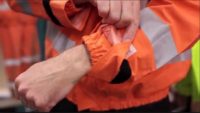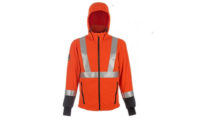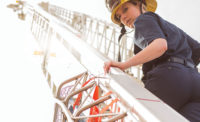History
ASTM International is one of the largest voluntary standards developing organizations in the world.
ASTM volunteer members belong to one or more standards-writing committees, each of which covers a subject area such as steel, petroleum, medical devices, consumer products, nanotechnology, additive manufacturing and many more. These committees develop the more than 12,000 ASTM standards found on ASTM's site and in the 80-volume Annual Book of ASTM Standards.
A standard is a document that has been developed and established through ASTM's consensus principles and which meets the requirements of ASTM procedures and regulations. Full consensus standards are developed with the participation of stakeholders with an interest in their development and use.
ASTM standards are voluntary in that ASTM does not mandate their use. However, government regulators often give voluntary standards the force of law by citing them in laws, regulations and codes.
Scope
This specification establishes applicable test methods, minimum physical and thermal performance criteria, a suggested sizing guide, and suggested purchasing information for rainwear for use by workers who are potentially exposed to industrial hydrocarbon fires or other petrochemical fire hazards.
Why this standard is important
Employees who will use ASTM F2733 often work outdoors during conditions involving rain and wind. Flame resistant rainwear is required that provides protection against hazards. Most rainwear meeting requirements of F2733 also protect against hot liquid splash hazards. Flame resistant rainwear that meets ASTM F2733 can also be tested to ASTM F2701, Test Method for Evaluating Heat Transfer through Materials for Protective Clothing Upon Contact with a Hot Liquid Splash.
Hazards
Workers in oil refineries, chemical plants, the natural gas industry and other industries that involve flammable or explosive materials need access to rain gear that is also flame resistant.
The intent of F2733 is to equip employees with flame-resistant rainwear that lowers the percentage of body burn and burn severity from a three-second flash fire, thereby increasing survivability. The National Fire Protection Association defines flash fire as, “A fire that spreads rapidly through a diffuse fuel, such as dust, gas or vapors of an ignitable liquid, without production of damaging pressure.” Flash fires are characterized by high temperature, short duration and a rapidly moving flame front.
NFPA 2112 can be used as complementary to ASTM F2733. Both set minimum requirements to maximize protection for workers facing flash fire hazards. NFPA 2112 is for work shirts, pants and coveralls. ASTM F2733 is specific to rainwear.
What should employers do to protect employees?
Use ASTM F2733 as a suggested sizing guide, and as suggested purchasing information for rainwear for use by workers who are potentially exposed to industrial hydrocarbon fires or other petrochemical fire hazards. Rainwear is FR protection that is frequently neglected but can be valuable protective clothing for employees in cold temperatures and wet weather.
Key definitions
Burn Injury: Burn damage which occurs within human skin at various depths as a function of temperature and time and which can be described mathematically in a burn injury model.
Note: Burn injury in human tissue occurs when the tissue is heated above a critical temperature. The degree of burn injury-first, second or third degree-depends upon the level above the critical temperature, the duration above the critical temperature and the depth in the skin layers.
Breakopen: A material response evidenced by the formation of a hole in the material during the thermal exposure that results in the exposure energy in direct contact with the body surface or an undergarment.
Stoll Curve: Curve used to predict the onset of a second-degree burn on human tissue.
Thermal Protection: The property that characterizes the overall performance of a garment or protective clothing ensemble relative to how it prevents the transfer of heat that is sufficient to cause burn injury.
Design Test: One made on a sample treated as representative of an industrial product. Not intended to be re-done unless components of the material change.
General requirements
Performance Requirements
Requirements shall be met initially as manufactured as well as after five cleanings.
Leak Resistance: Material must withstand water pressure of 30 psig without leaking. The seams of the rainwear must not exhibit any evidence of leakage when exposed to water at three psig for two minutes.
Tear Resistance: Material shall have a trapezoidal Moisture Vapor Transmission (Breathability). If the rainwear is marketed as being breathable, test according to ASTM E95 procedure BW and report results.
Markings and Reflective Materials: These materials attached to the rainwear shall be permanent and shall not degrade the performance of the rainwear.
Flame Resistance: Rainwear material shall be flame resistant and shall not melt and drip when tested in accordance with ASTM D6413 and shall exhibit no more than a two second after flame time and less than a six-inch char length.
Thermal Protection: Rainwear material shall be tested in accordance with ASTM F1930, a design test, after 1 washing and 1 drying. Testing parameters are set at heat flux of 84 +/- 2 kW/m2 [2.0 +/- 0.05 cal/cm2s] and an exposure time of 3 +/- 0.1 seconds.
The following information is determined:
- The average predicted total area of burn injury for the three specimens tested shall be equal to or less than 40 percent.
- Material response characteristics shall be reported for all exposures.
- Characteristics are: afterflame time, breakopen, charring, melting, dripping, garment ignition, embrittlement, and shrinkage.
Rainwear Construction: Utilize materials, stitchings, tapes, coatings, fasteners, and closure materials that minimize heat conduction for the construction of compliant FR rainwear. Fasteners and closures used, for example, zippers, snaps, buttons, etc. that are made from metal, shall be covered with a layer of rainwear material on the inside of the garment such that these items of construction will not contact undergarments or skin.
Structural seam integrity: Structural seams shall not exhibit a seam failure that creates a seam opening of greater than 51 mm (2 inches).
Closure function: Closures shall function (open only) after the simulated fire exposure. Closures that do not fully open do not meet the performance requirements of this specification. Report all closures that do not fully open
Labeling Requirements
Manufacturer Label: States size, catalog number, manufacturer’s name and notation of conformance to F2733, and the label is permanently affixed in each rainwear item.
Statement of Conformance: The statement of conformance to this specification shall be, “This rainwear meets or exceeds requirements for ASTM F2733 Standard Specification for Flame Resistant Rainwear for Fire Hazards.”
Care Label: States instructions for cleaning and care and shall be readable throughout the life of the garment.
Packaging Label: States name of manufacturer, size, material, catalog number, date code and ASTM designation.
The complete standard can be purchased and downloaded from the ASTM website at http://www.astm.org/Standards/F2733.htm.
ASTM International standards can be purchased from Customer Service (phone: 610-832-9585; service@astm.org) or at www.astm.org. ASTM International welcomes and encourages participation in the development of its standards. For more information on becoming an ASTM member, visit www.astm.org/JOIN.
Sponsor: www.nascoinc.com, 800-767-4288







